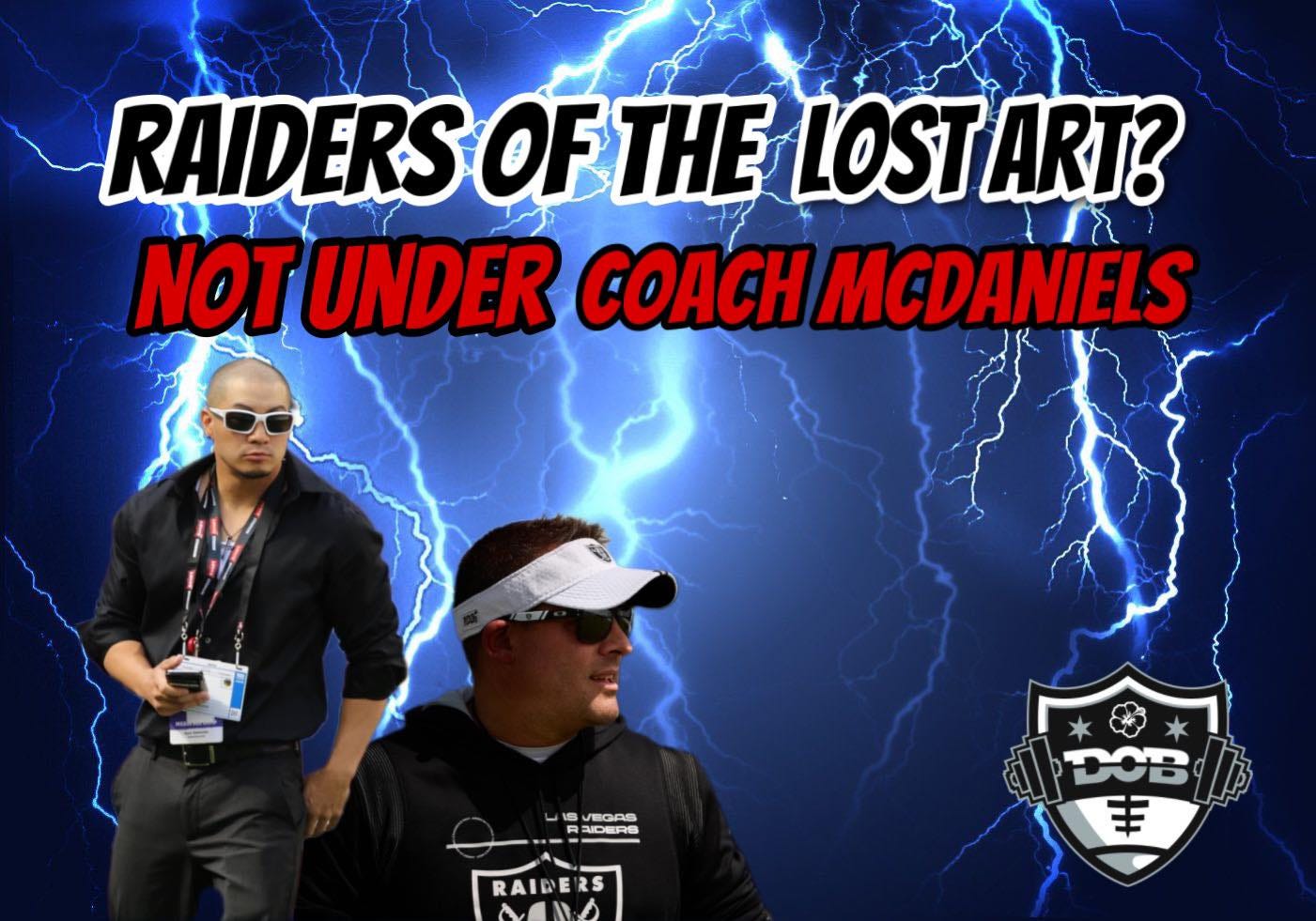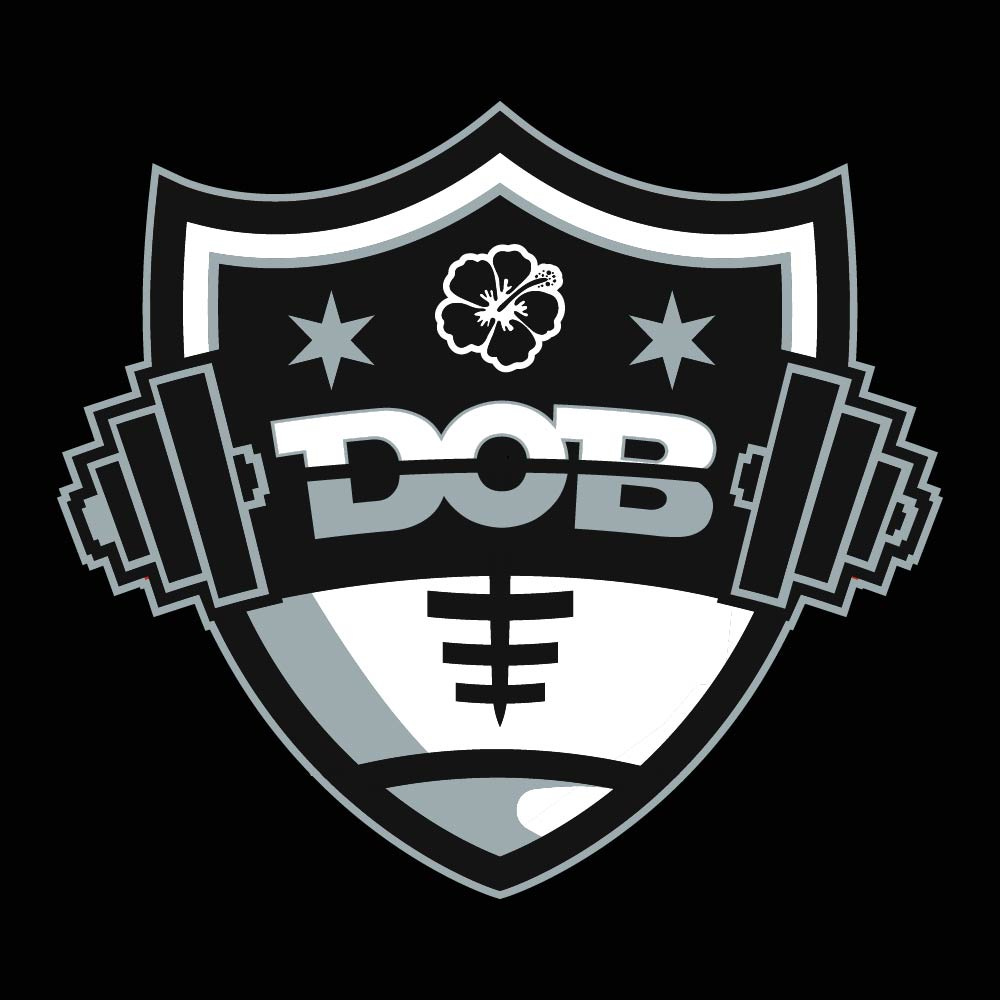BEAST Analysis: Raiders of the lost art? Not under Coach McDaniels
Speed. Instincts. Agility. These are three intangibles every scout looks for when evaluating cornerbacks:
A cornerback needs speed to mirror fast wide receivers
A cornerback needs a high football IQ to anticipate route recognition
A cornerback needs loose hip flexors to change directions at the depth of his drop.
However, in my opinion no skill set is more important than fundamentals.
CB Ahmed Plummer vs CB Rashard Anderson
A solid cornerback can get by with marginal quickness, marginal instincts, and marginal agility, if he’s fundamentally sound. A prime example of this was when the San Francisco 49ers first drafted CB Ahmed Plummer back in 2000.
If you remember, Plummer was highly regarded as the most NFL-ready cornerback coming out of the 2000 NFL Draft, despite being the third cornerback taken off the board. Why? Because he was a true-technician (student) of the game.

I hate to say it but fundamentals have become a lost art in today’s NFL. Today, we are seeing more underclassmen enter the NFL draft than in year’s past, and that greatly hampers a player’s development if they aren’t coached up.
Raiders of the lost art? Not under Coach McDaniels
Raiders HC Josh McDaniels echoed the importance of fundamentals--in last Sunday’s training camp press conference while citing the importance of the lost art:
“There’s an element of pre snap communication, there’s an element of post-snap assignments that really is the most important parts of this.
We spend the entire first half of the practice teaching the techniques and the fundamentals we’d like to see show up in the team drills.
So, you can evaluate the communication, you can see that they know their assignment and you can see that they are trying to use the techniques and fundamentals that we’re teaching.
And really there is not many good plays in football that happen without good communication and fundamentals, and that’s really a huge focus for us right now while the physical part is on hold for a few more days,” coach said.
Plummer entered the 2000 NFL draft as a senior and endured early success in San Francisco compared to Carolina Panthers first-round pick (No. 23) CB Rashard Anderson.
In Plummer’s first four seasons, he racked up 270 tackles, 12 interceptions and 59 PBUs.
Compare that stat line to Anderson who finished with 66 tackles, 1 interception and 6 PBUs before running himself out of the league after only two seasons, and you can see where the value of fundamentals lie.
On the surface, one would fall in love with Anderson’s size for the position. At 6-2, 205, with a 123-inch broad jump, it’s not surprising to see an NFL team take a risk on a player’s upside rather than drafting a sure thing (Plummer).
He had the prototype size and length that scouts covet. But the one thing that was sorely missing from his game was being fundamentally sound. Let’s be honest, every coach believes he can get the most out of the player but it’s up to the player to turn that teaching into action.
Fast forward to present day, and the Raiders have a plethora of young cornerbacks to coach up including but not limited to:
CB Rock Ya-Sin
CB Trayvon Mullen (PUP)
CB Nate Hobbs
CB Amik Robertson
CB Anthony Averrett
Whoever wins the two Raiders boundary CB positions weighs heavily on fundamentals. After all, part of any learning curve is understanding the minute details of the position.
So let’s open up my playbook and breakdown the fundamentals of the cornerback position and what the job entails when fundamentals are involved: (PSA: I posted my 49ers practice clips for reference).
Four Common Techniques
When evaluating any cornerback you need to see how well they play their respective pre-snap splits/leverage.
Press-man
Press-zone
Off-man
Off-zone
Press-man/zone coverage
When the cornerback is lined up directly across from the wide receiver usually in bump-and-run. The whole purpose of press-man is to disrupt the timing between quarterback and receiver. In order to accomplish this action it requires fundamentals at the LOS (line of scrimmage).

Off-man/zone coverage & Press-Bail Technique
A cornerback can be in off-man or off-zone coverage. The difference is man vs zone coverage.
Now, we can talk about ROE where it may look like 1/4, 1/4, 1/2 based on how the coverage is drawn up. We can also talk about middlefield close, middlefield open, or the ROE of a complex Cover-7.
Note: Middlefield close is focused on an 8-man box--stopping the run first.
The ROE for each defensive coordinator’s scheme varies but for the sake of this article we will keep it very vanilla and stick to the techniques required for off-coverage.

Press-Bail Technique
Pre-snap technique showing (bump-and-run) then turning back toward the sideline once the ball is snapped--looking via the receiver to the quarterback.

In a nutshell, this is a zone-coverage where your post-snap leverage is flushing the receiver back inside using outside leverage. The downside to playing this technique is your hips are opened up too early allowing for speed-outs and breaking routes to the boundary.
No matter the pre-snap split: To be fundamentally sound you must do five things:

1. Do the cornerbacks keep their shoulder’s squared at the LOS?
This is extremely important. Just like in basketball when coming off a screen, a cornerback shoulders must be squared in order to maintain proper leverage throughout the jam. If they don’t, they are susceptible to opening up their hips too early defeating the purpose of the initial play-call (technique).
2. Do their feet remain patient?
Many times over I have seen cornerbacks get happy feet when they are up in press coverage. Whether taking false steps or giving up too much ground off the release, it’s imperative that the cornerback maintain patient feet throughout, as they try to flat-line the receiver laterally.
3. Do they use proper hand-placement?
Using the proper hand to jam or disrupt the timing of the receiver coming out of his release (route-tree) is key. Whether playing with outside integrity (forcing player back inside) in a press cover-2 or simply playing straight up in press cover-0, the cornerback must be fundamentally sound when jamming the receiver off the line of scrimmage.

These three techniques are the building blocks for a strong press cover corner. There are more nuances that go into the process after that and it starts with pad-level.
4. Pad-level (stay low)
Does the cornerback keep a low center-of-gravity pad level? Does he have a strong cadence in his backpedal while cutting down false steps? Can he drop at the top of his depth? Does the CB close to the receiver first before trying to find the football? (find man then ball concept).
5. Sure-Tackler
Does the CB show fight in run-support and can he be a sure-tackler once the receiver makes the catch in open-space? This is very important. If you can’t tackle, if you take poor angles to the ball-carrier, if you don’t wrap up, if you don’t squeeze via the thighs, good luck my friend.

Secondary Fundamentals
Once the receiver comes off the line, the cornerback must keep his pads low maintaining a smooth cadence in his backpedal. From there he must have the COD (Change of Direction) skills to shadow the receiver downfield. Once the ball is up in the air, the fundamentals of locating man then ball come into play. From there it comes down to receptions, interceptions or PBUs depending on your closing speed.
However, it’s important to note that if you get too far up vertically on the receiver, you put yourself at a disadvantage. How? Because then the wide-receiver has the luxury of running back play-side toward the line of scrimmage, allowing himself a safe cushion for an easy catch (also called keeping it friendly). Instead the fundamentally thing to do is stay on his hip slightly in a trail position throughout the play.
From here it’s making a play on the ball at the catch-point--forcing turnovers and coming up with interceptions:

Now that we understand the basics of pass coverage, you’re probably wondering which Raiders cornerbacks are the most fundamentally sound when it comes to using these techniques? As of right now my top two choices would be CB Rock Ya-Sin & CB Nate Hobbs.

CB Rock Ya-Sin & CB Nate Hobbs shining in camp
I had the opportunity to catch up with Hobbs in yesterday’s presser while citing his innate ability to learn multiple positions using spacing to his advantage.
Watch my YouTube video below:
As the Raiders continue to groom their young but very talented core of cornerbacks, it will be interesting to see who wins the starting role opposite of Ya-Sin (taking my shot) as the position is up for grabs.
Mahalo for the read. If you enjoyed the content, please feel free to share this article, and also subscribe/follow on social media below to stay up-to-date on all things BEAST. Mahalo :)
#BEASTwriter | #DarksideofBEASTwriter
Follow us on Social media below for FREE Raiders Giveaways:
YouTube: @BEASTwriter
Twitter: @BEASTwriter
Facebook Page: @DarksideofBEASTwriter
Facebook Group: @DarksideofBEASTwriter
Instagram: @BEASTwriter



